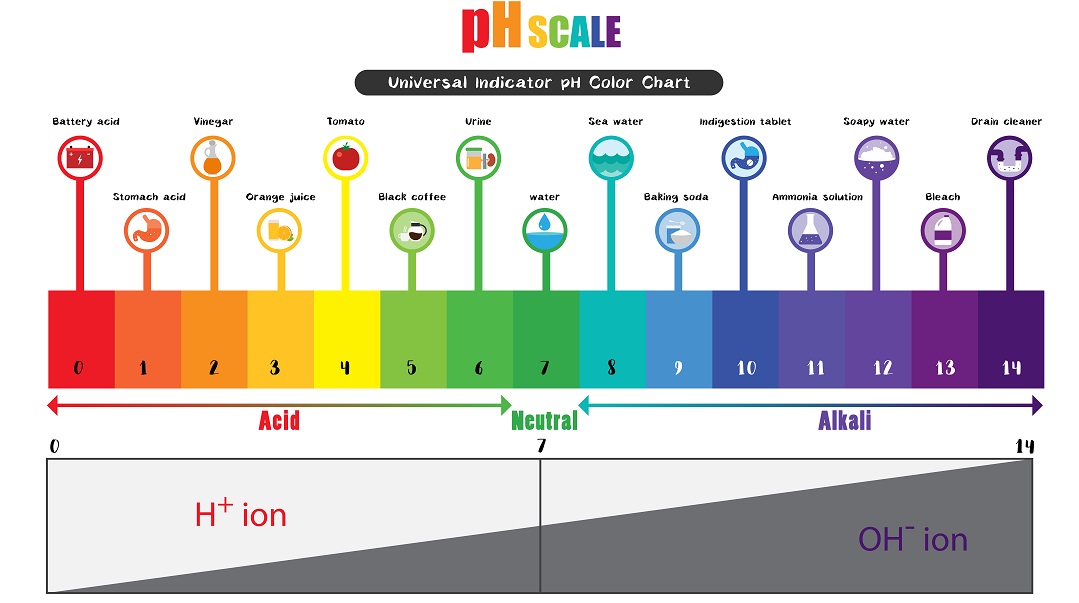Do you love coffee but find that its acidity sometimes causes discomfort or an unpleasant sharp taste? You’re not alone.
Many coffee lovers struggle with the harshness that acidic brews can bring. The good news is, you don’t have to give up your favorite cup to enjoy a smoother, gentler coffee experience. Whether it’s stomach irritation or just a desire for a milder flavor, there are simple and effective ways to make your coffee less acidic—without compromising on taste.
Ready to discover how you can transform your daily brew into a smoother delight? Keep reading, because these easy tips will change the way you enjoy coffee forever.
Causes Of Coffee Acidity
Coffee beans naturally contain several types of acids, including chlorogenic, citric, and malic acids. These acids give coffee its bright and tangy flavor but can also cause acidity. The roast level affects acidity too. Light roasts preserve more acids, leading to a sharper taste. In contrast, darker roasts break down acids, making coffee less acidic and smoother.
Brewing methods influence acidity as well. Hot water extracts more acid from coffee grounds, especially at temperatures above 200°F (93°C). Using cooler water or cold brew reduces acid extraction. Brewing time also matters; longer brewing can increase acidity. Methods like paper filters remove some acidic oils, lowering acidity in your cup.
Choosing Low-acid Coffee Beans
Darker roasts have less acid than lighter ones. The roasting process breaks down acids, making the coffee smoother. Choose beans labeled as dark roast for a gentler taste on your stomach.
Some bean varieties naturally contain less acid. Arabica beans often have lower acidity than Robusta. Beans like Sumatra and Brazil are known for their mild acid content.
| Region | Acidity Level | Notes |
|---|---|---|
| Brazil | Low | Known for smooth, nutty flavors |
| Sumatra | Low | Earthy, full-bodied taste |
| Mexico | Medium | Balanced with mild acidity |
| Ethiopia | High | Bright and fruity flavors |
Brewing Techniques To Lower Acidity
The cold brew method uses cold water and a long steep time. This results in coffee with much less acid than hot brewed coffee. The coffee grounds steep in cold water for 12 to 24 hours. This slow process extracts fewer acids, making the coffee smoother and less bitter.
Adjusting brew time and temperature also helps reduce acidity. Brewing at a lower temperature (around 195°F) stops too many acids from releasing. Shortening brew time prevents over-extraction, which can make coffee taste sour or sharp.
Using paper filters can lower acidity too. Paper traps some of the oils and acids that metal filters let pass. This gives coffee a cleaner, milder flavor without harsh acid notes.
Adding Ingredients To Balance Acidity
Milk and milk alternatives can help reduce coffee’s sharp acidity. Adding a splash of milk or almond milk softens the taste. These ingredients create a creamy texture that balances the sour notes. Try oat milk for a smooth, less acidic flavor.
Adding eggshells to coffee grounds is an old trick. Clean and crush eggshells, then mix them with your coffee before brewing. Eggshells contain calcium, which neutralizes acids in the coffee. This method lowers acidity without changing the flavor much.
| Ingredient | How to Use | Effect |
|---|---|---|
| Baking Soda | Add a small pinch to brewed coffee or grounds | Neutralizes acid, reduces bitterness |
| Salt | Add a pinch to grounds or brewed coffee | Balances acidity and cuts bitterness |
Water Quality And Its Effect
Using alkaline water can reduce the acidity in coffee. Alkaline water has a higher pH, which helps neutralize the coffee’s natural acids. This results in a smoother and less sharp taste. Many people find coffee brewed with alkaline water easier on the stomach and less bitter.
Filtering water removes impurities that might increase acidity. A good water filter takes out chlorine and other chemicals that affect coffee flavor. Some filters also add minerals like calcium and magnesium. These minerals improve the taste and balance the acidity.
| Water Quality Factor | Effect on Coffee Acidity |
|---|---|
| Alkaline Water (pH above 7) | Neutralizes acids, makes coffee smoother |
| Filtered Water | Removes impurities, reduces harsh flavors |
| Mineral Content | Improves taste, balances acidity |

Storage Tips To Preserve Smoothness
Hot coffee left out too long becomes bitter and more acidic. Drinking freshly brewed coffee keeps the taste smooth and gentle.
Always store coffee beans in an airtight container. Keep them in a cool, dark place away from sunlight and heat. Avoid storing beans in the fridge or freezer because moisture can damage them.
Grinding coffee beans just before brewing helps keep acidity low. Pre-ground coffee loses freshness and gains acidity faster.
Proper storage slows down oxidation. Oxidation causes coffee to taste sour and lose its smooth flavor.
Follow these simple tips to preserve coffee’s natural smoothness and enjoy less acidic coffee every day.
Commercial Products To Reduce Acidity
Acid reducers like baking soda and salt help lower coffee acidity. A small pinch of baking soda added to coffee grounds or the cup can neutralize acids. Salt works similarly, reducing bitterness and acid taste. Commercial acid reducers are made specifically for coffee and work like baking soda but may cost more.
Specialty low-acid coffee brands offer beans grown or processed to reduce natural acids. These coffees are easier on the stomach and taste smoother. Choosing dark or medium roast beans also helps, as lighter roasts have more acid.
Using paper filters instead of metal traps some acidic oils. Cold brew coffee is a popular choice for low acid, as it uses cool water and long steeping times, extracting fewer acids than hot brewing methods.


Frequently Asked Questions
How Do You Reduce Acidity In Coffee?
Brew coffee longer or use cold brew to lower acidity. Choose dark roast beans and coarser grinds. Add a pinch of baking soda or eggshells. Use paper filters and avoid storing hot coffee too long. Adding milk also helps neutralize acidity.
How Can I Alkalize My Coffee?
Add a small pinch of baking soda to your coffee or grounds to neutralize acidity. Use dark roasts or cold brew for naturally lower acid levels. Brewing with alkaline water or adding eggshells to grounds can also alkalize coffee effectively.
What Is The Least Acidic Way Of Making Coffee?
Use cold brew method with dark roast beans and coarser grounds to reduce acidity. Adding a pinch of baking soda or eggshells also lowers acidity. Choose paper filters and avoid over-extracting by brewing at lower temperatures for less acidic coffee.
How Do You Reduce The Acidity Of Pour Over Coffee?
Use darker roast beans and coarser grounds to lower acidity. Brew with slightly cooler water and shorter time. Try cold brew or add a pinch of baking soda or eggshells to neutralize acid. Adding milk also smooths acidity and improves taste.
Conclusion
Reducing coffee acidity can make your cup smoother and gentler on your stomach. Choose darker roasts or try cold brew for lower acid levels. Adding a pinch of baking soda or eggshells helps neutralize acids naturally. Adjust brewing time and temperature to avoid extra bitterness.
Using paper filters also traps some acidic oils. These simple changes improve taste and comfort without losing coffee’s rich flavor. Enjoy your coffee without the harsh acidity that can upset your stomach. Small tweaks make a big difference in your daily brew.

Yes, working as , Food Blogger and Product Reviewer for last 6 years. Here you will get amazing deals for Smart kitchen products. I am your best source for the latest update in cooking trends. I provide insightful articles, reviews, and analysis on cutting-edge kitchen gadget. My mission is to empower readers with the knowledge they need to stay ahead in a rapidly evolving coking world. Join me as we explore the future of food technology and how it shapes our lives today and tomorrow.





